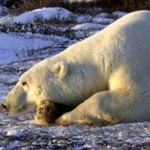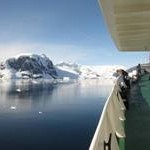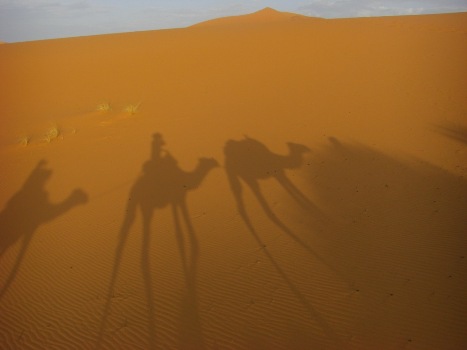 I
If you’re searching for more from your holiday than the sea, sun, sand and sunbathing then it’s worth considering a cruise as an alternative. Whilst you may associate cruises with cheesy cabaret, crystal chandeliers and casinos, these trips are becoming far more adventurous and the number of UK passengers cruising this year is expected to rise by another eight per cent to a record, 1.77 million. This is partly due to the popularity of adventure cruises such as the
Arctic cruise. Here winter temperatures can be as low as −40 °C, so forget swimsuits and dressing for dinner and pack thermals and waterproofs to prepare for sailing the world’s most remote coastlines and viewing an incredible array of wildlife and amazing scenery. What can you see on an Arctic cruise?
Arctic Foxes
Arctic foxes have stunning coats which tend either to be white or a beautiful blue-grey. As well as being attractive, these coats act as very effective winter camouflage and are the warmest fur of any mammal – even warmer than that of the polar bear. The foxes also have furry soles, short ears and a short muzzle, all of which are important in helping them survive the chilly climate. They are amazing creatures to observe, as the basic social unit is a breeding pair who will remain together in the same territory and den for up to five years.
 Polar Bears
Polar Bears
The main highlight of an Arctic cruise is often spotting the iconic polar bear. Only in the Arctic can you see this amazing creature in its natural habitat and view their full personality. You’ll be impressed by their amazing adaptations to life in the harsh Arctic environment and dependence on sea ice. However, while they look cute and friendly they’re actually incredibly strong and ferocious, measuring up to 3.1 metres long and weighing up to 1,200 pounds. Sadly, these giant beasts are becoming highly vulnerable, threatened with the increasing effects of global warming, which is melting their habitat.
Svalbard Reindeer
Svalbard has a unique subspecies of reindeer, the Svalbard reindeer which is the smallest species within the deer family. The deer have characteristically short legs but still carry impressive antlers. They spend their days concentrating on eating as much as possible creating large fat reserves to survive the long Arctic winter. These reindeer are not shy and can be more commonly spotted than the polar bear.
Ice Seals
The Arctic is home to several unique and extraordinary, beautiful seal species, such as: ribbon seals, bearded seals, ringed seals, spotted seals, harp seals, and hooded seals. These seals are often called ice seals because they spend the bulk of their lives either on or near sea ice. They can be spotted along with walrus on ice floes or off-shore islands and so make perfect photographic subjects.
Whales
Whilst some whales may migrate over the severe winters, the bowhead, beluga and narwhal can be seen in the Arctic all year round. The bowhead feeds by swimming with its huge mouth open, taking in enormous amounts of water and trapping copepods and other drifting crustaceans. This is because it is a baleen whale and so instead of teeth, it has several hundred fringed plates, called baleen, that hang down from its upper jaw and filter small prey from the water.
 The beluga is a very beautiful creature which is also known as the white whale due to its distinctive white colouring. Belugas are a sociable bunch, often gathering in large numbers so once you spot one, look out for others nearby. You may only need to listen out for them as belugas are quite loud and can often be heard whistling, clicking, and grunting.
The beluga is a very beautiful creature which is also known as the white whale due to its distinctive white colouring. Belugas are a sociable bunch, often gathering in large numbers so once you spot one, look out for others nearby. You may only need to listen out for them as belugas are quite loud and can often be heard whistling, clicking, and grunting.
What distinguishes the narwhal from the beluga is its magnificent spearing tusk which can extend up to half of the whale’s body weight. Nicknamed ‘unicorn of the sea’, the tusk is actually a long, twisted tooth that is projected up to three metres in front of the whale.
Arctic Birds
There is also a variety of birds which can be seen in the Arctic. If you cruise during the summer months you may spot the Arctic tern which is famous for its migration, flying from its breeding grounds in the Arctic 44,000-miles to the opposite pole the Antarctic. Here it will spend September to May before flying back again for summer in the Arctic. This is by far the furthest migration by any known animal and ensures that this bird sees two summers per year and more daylight than any other creature on the planet.
Other birds you may spot are puffins, eider ducks, skuas, sandpipers and auks. The birds in the Arctic are also feeling the effects of climate change; from difficulties in flying in foggy weather to avalanches and new threats such as mosquitoes.
Unspoiled Wilderness
In addition to unique wildlife, an Arctic cruise enables you to sail round some one of the world’s last great wildernesses. The dramatic scenery ranges from ice covered seas, fjords with breathtaking mountain scenery, rarely visited bays and inlets and glaciers flowing into the sea around you.








 Polar Bears
Polar Bears The beluga is a very beautiful creature which is also known as the white whale due to its distinctive white colouring. Belugas are a sociable bunch, often gathering in large numbers so once you spot one, look out for others nearby. You may only need to listen out for them as belugas are quite loud and can often be heard whistling, clicking, and grunting.
The beluga is a very beautiful creature which is also known as the white whale due to its distinctive white colouring. Belugas are a sociable bunch, often gathering in large numbers so once you spot one, look out for others nearby. You may only need to listen out for them as belugas are quite loud and can often be heard whistling, clicking, and grunting.

 Entries (RSS)
Entries (RSS)